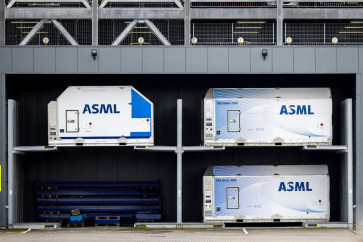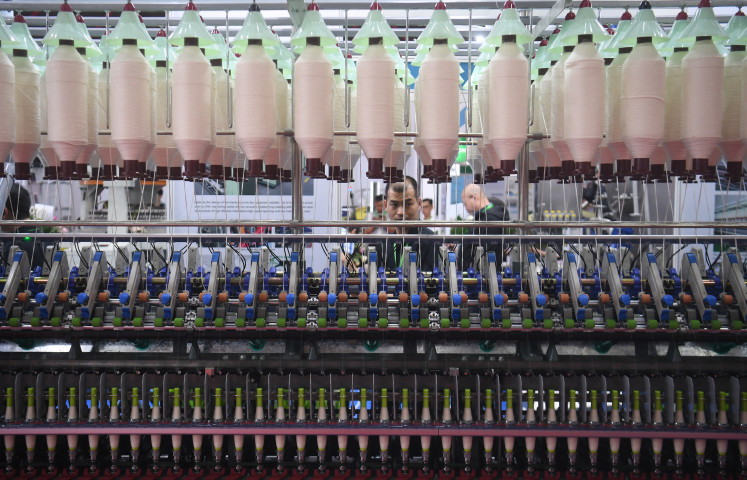Popular Reads
Top Results
Can't find what you're looking for?
View all search resultsPopular Reads
Top Results
Can't find what you're looking for?
View all search resultsAnalysis: SIPNAS for financial infrastructure sustainability
One of the most critical moments in the development of the Indonesian credit sector was when the National Credit Information System (SIPNAS) was formulated in early 2013
Change text size
Gift Premium Articles
to Anyone
O
ne of the most critical moments in the development of the Indonesian credit sector was when the National Credit Information System (SIPNAS) was formulated in early 2013. SIPNAS is a credit reporting system that adopts a dual credit data and information management system for regulators, in this case Bank Indonesia (BI) through a Debtor Information System (DIS), and a private credit bureau called the Credit Information Management Agency (LPIP).
To date, credit information services in BI’s DIS have been limited to basic information covering mostly data from banks and non-bank financial institutions.
Therefore, financial industry players have long awaited for the SIPNAS and expect the services on credit information of high quality and ones that give added value for its users, especially to support smooth distribution of funds and risk management, to be available. This is to cope with the demand from the surging financial services industry for a wider range of data from the non-financial industry, as well as more varied and value-added services.
The application of a dual credit reporting system is not something new. Data from the World Bank as of 2016 showed that a few countries already adopted the system quite a long time ago. Morocco, for instance, began embracing the system in 2005 with a private credit bureau covering 24.6 percent of its adults. Another example, Malaysia, had a system that covered 76.4 percent of its adults. Indonesia had zero percent coverage.
In 2015 the Indonesian Financial Services Authority (OJK) granted permits to credit rating agencies PT Kredit Biro Indonesia Jaya and PT Pefindo Biro Kredit, making both Indonesia’s pioneer credit information management agencies.
The credit reporting goes as follows: All data from BI’s DIS is channeled into the LPIP as primary data and later the LPIP gathers, processes and distributes the processed data in line with prevailing rules. All the collected data is further processed to produce credit reports and aggregate data analyses. The LPIP’s advantage is that its features can be easily integrated with other
applications.
However, in the near future, the distribution of credit data from BI’s DIS will be diverted to the OJK’s Financial Information Services System (SLIK), which aims to improve data collection from reporting financial institutions and data distribution to the LPIP. As the time line is quite progressive, the plan needs to be discussed with relevant stakeholders, including the LPIP as an integral part of SIPNAS.
The Indonesian Fintech Association has communicated intensively with the OJK on this issue and as a result, OJK Regulation (POJK) No. 77/2016 allows providers of peer-to-peer (P2P) lending to become either a member of SLIK or an LPIP.
Basically, regulators and private credit bureaus in SIPNAS must create a strong synergy. The main challenge to produce credible data products is that many data components still cannot meet standards of data quality dimensions. Addressing a challenge is necessary as data aggregation is the key to generate credible data.
Once data from regulators can be accessed directly by the public and financial institutions, regulators and private credit bureaus can establish a SIPNAS data governance office that can trace data anomalies from their source.
In the future, data that can generate credible information will be much sought. Analytical products from various levels, maturity stages and approaches will become even more appealing when supported by more varied databases. A vital element in the implementation of SIPNAS is data and information security and in this case the balance between people, process and technology is the key to secure data and
information.
The dissemination of information on the relatively new SIPNAS and LPIP must be enhanced as it is not easy to change the mindset of the public or institutions that serve as data sources about new concepts to be introduced by the LPIP. Consequently, regulators must pay extra attention to and give full support to the process.
Furthermore, SIPNAS was established to provide financing that is inclusive, quick and accessible to the people and small and medium enterprises. Its development is expected to serve three stakeholders, namely the financial industry and relevant industries (to support business operations), the government and the authorities, to help spur healthy economic growth in Indonesia and safeguard the public interests in providing assurance of better personal data management. Through the LPIP, SIPNAS can accelerate the achievement of domestic financial literacy and better personal financial management.
The LPIP will try to enrich the variety of data and develop new products that will strengthen SIPNAS as a decent infrastructure for industry players and the public based on existing regulations. It is our task to maintain its sustainability in the long run.
_______________________________________________
The writer is the coordinator of credit infrastructure task force at the Indonesian FinTech Association and chief information officer at PT Pefindo Biro Kredit.










